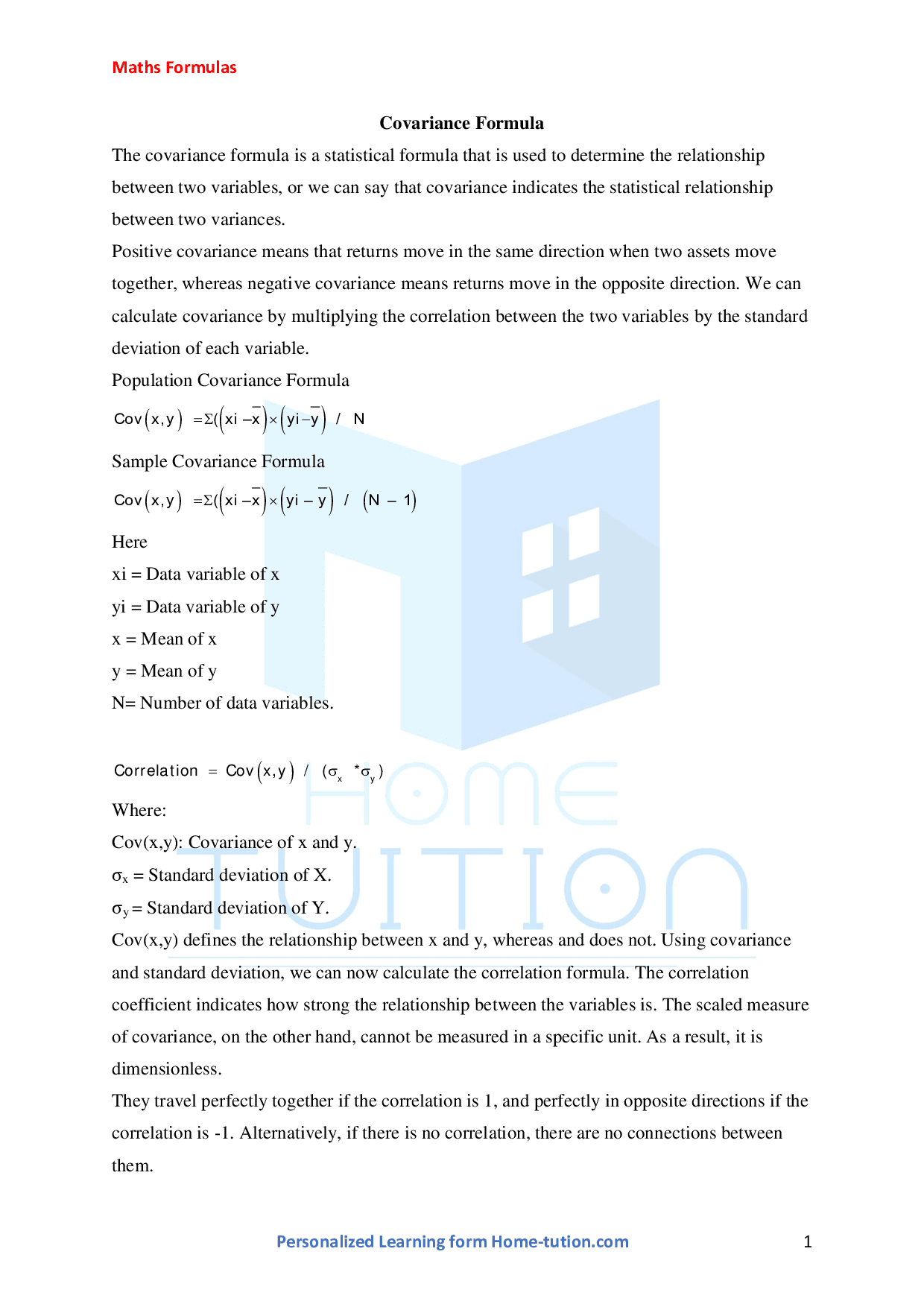About Covariance Formula
The covariance formula is a statistical formula that is used to determine the relationship between two variables, or we can say that covariance indicates the statistical relationship between two variances.
A positive covariance means that returns move in the same direction when two assets move together, whereas negative covariance means returns move in the opposite direction. We can calculate covariance by multiplying the correlation between the two variables by the standard deviation of each variable.
Population Covariance Formula
Cov(x ,y) = Σ((xi - x?) ×(yi - y?) / N
Sample Covariance Formula
Cov(x,y) = Σ((xi - x?) ×(yi - y?) / (N - 1)
Here
xi=Data variable of x
yi= Data variable of y
x= Mean of x
y= Mean of y
N= Number of data variables.
Correlation = Cov(x ,y)/(σx xσy)
Where:
Cov(x,y):Covariance of x and y.
σx=Standard deviation of X.
σy=Standard deviation of Y.
Cov(x,y) defines the relationship between x and y, whereas and does not. Using covariance and standard deviation, we can now calculate the correlation formula. The correlation coefficient indicates how strong the relationship between the variables is. The scaled measure of covariance, on the other hand, cannot be measured in a specific unit. As a result, it is dimensionless.
They travel perfectly together if the correlation is 1, and perfectly in opposite directions if the correlation is -1. Alternatively, if there is no correlation, there are no connections between them.
Our experts prepared a List of all Maths formulas used in different calculations.

